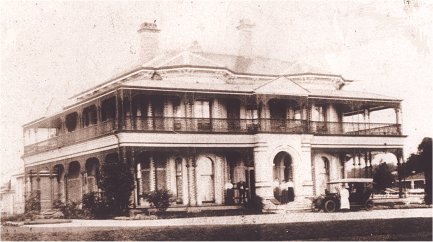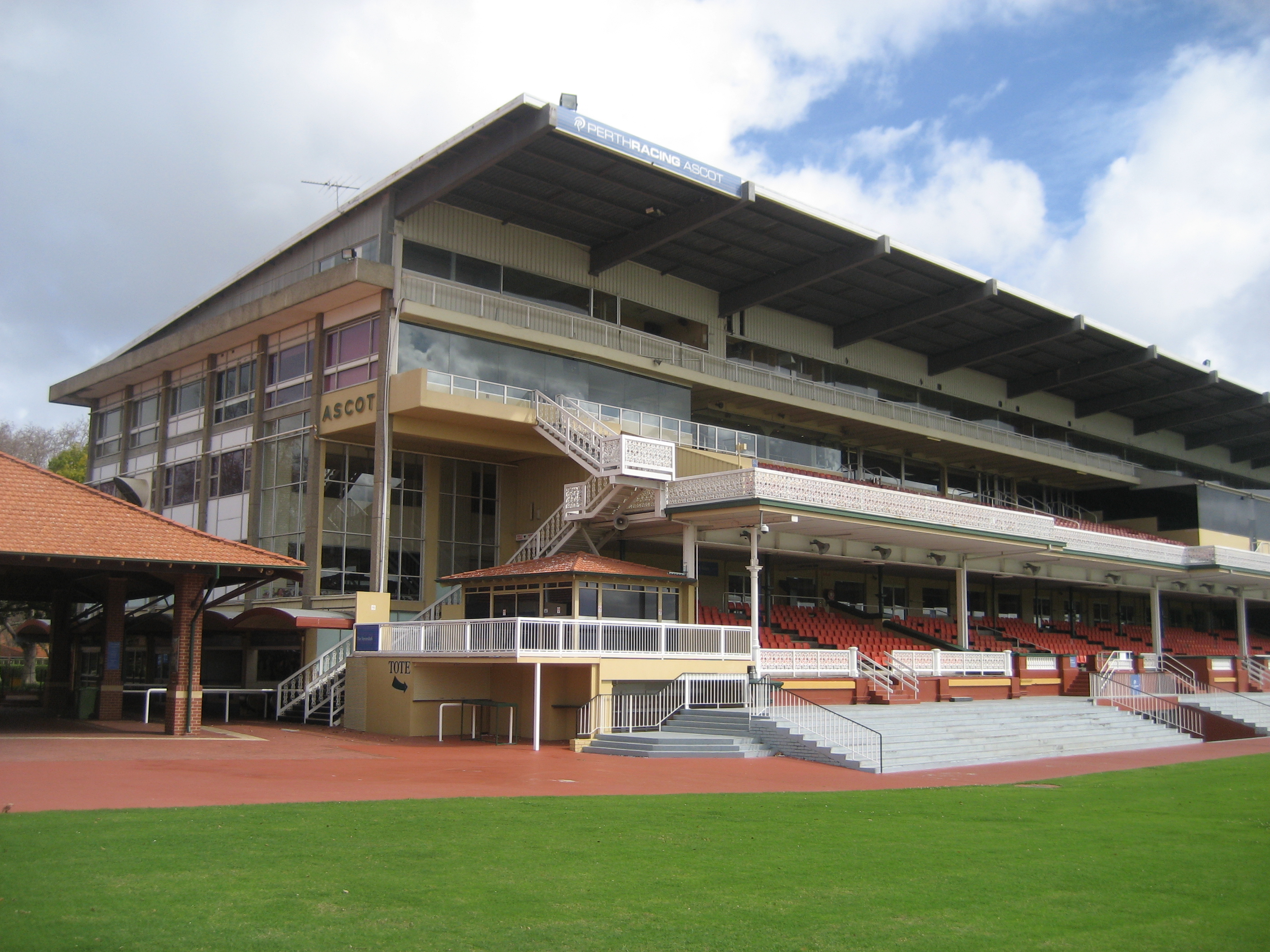|
Ascot (other)
Ascot, Ascott or Askot may refer to: Places Australia * Ascot, Queensland, suburb of Brisbane * Ascot, Queensland (Toowoomba Region), a locality * Ascot Park, South Australia, suburb of Adelaide * Ascot (Ballarat), town near Ballarat in Victoria * Ascot (Bendigo), suburb of Bendigo in Victoria * Ascot Vale, Victoria, suburb of Melbourne ** Electoral district of Ascot Vale, former electoral district of the Victorian Legislative Assembly * Ascot, Western Australia, suburb of Perth ** Electoral district of Ascot, former electoral district of the Western Australia Legislative Assembly Canada * Mont-Bellevue, Quebec, which comprises the former town of Ascot * Ascot Corner, Quebec India * Askot New Zealand * Ascot Park, New Zealand, suburb of Porirua United Kingdom * Ascot, Berkshire ** North Ascot ** South Ascot * Ascott, Buckinghamshire ** Ascott House * Ascott, Oxfordshire * Ascott, Warwickshire * Ascott-under-Wychwood, Oxfordshire * Ascott d'Oyley, Oxfordshire * Ascott Earl, O ... [...More Info...] [...Related Items...] OR: [Wikipedia] [Google] [Baidu] |
Ascot, Queensland
Ascot is a north-east suburb in the City of Brisbane, Queensland, Australia. In the , Ascot had a population of 5,777 people. Geography Ascot is characterised by large Queenslander homes and is located approximately north-east of Brisbane GPO. Ascot is best known for its beautiful old homes, the picturesque poinciana tree lined shopping area of Racecourse Road (), and for the Eagle Farm () and Doomben () racecourses popular for racing carnivals. Over a third of the suburb is taken up by Doomben and its related outer buildings, Eagle Farm and Doomben racecourses. Bartleys Hill is in the south-west of the suburb () and is above sea level. History Historically, the land was occupied by the Aboriginal Turrbal clan. The Turrbal called the area Yowoggerra, meaning ''corroboree place''. The clan had camping grounds on the north side of the Brisbane River around the Breakfast Creek area. It was at Breakfast Creek that explorers Oxley and Cunningham met members of the clan i ... [...More Info...] [...Related Items...] OR: [Wikipedia] [Google] [Baidu] |
Ascott House
Ascott House, sometimes referred to as simply Ascott, is a Grade II* listed building in the hamlet of Ascott near Wing in Buckinghamshire, England. It is set in a 32-acre / 13 hectare estate. Ascott House was originally a farm house, built in the reign of James I and known as "Ascott Hall". In 1873 it was acquired by Baron Mayer de Rothschild (of the neighbouring Mentmore Towers estate). The Rothschild family had begun to acquire vast tracts of land in Buckinghamshire earlier in the century, on which they built a series of large mansions from 1852 onwards. Baron Mayer gave the house at Ascott to his nephew Leopold de Rothschild, who transformed it over the following decades into the substantial yet informal country house that it is today. Architecture Leopold de Rothschild, whose principal country residence was Gunnersbury Park, used Ascott at first as a hunting box, but realising the limitations imposed by its modest size, in 1874 he employed the architect George Devey to ... [...More Info...] [...Related Items...] OR: [Wikipedia] [Google] [Baidu] |
Ascot (1914 Automobile)
The Ascot was made by Societe Buchet, Levallois-Perret, Seine, from 1914 to 1915. It was an Anglo-French product, the chassis being built for Hollingdrake Automobile Co. of Stockport, who fitted their own bodies, mainly being two-seaters and coupes. The engine was a 10 hp side-valve A flathead engine, also known as a sidevalve engine''American Rodder'', 6/94, pp.45 & 93. or valve-in-block engine is an internal combustion engine with its poppet valves contained within the engine block, instead of in the cylinder head, as ... with the gearbox in unit with it. It was to sell for 195 pounds. Defunct motor vehicle manufacturers of France {{Brass-auto-stub ... [...More Info...] [...Related Items...] OR: [Wikipedia] [Google] [Baidu] |
Ascot (1904 Automobile)
The 1904 Ascot was an English automobile manufactured for one year only; its 3½ hp engine was equipped with a "patented method for mechanically controlling valves, doing away with useless pinions and calves." It had no connection with the 1928 Ascot car maker. See also * List of car manufacturers of the United Kingdom :''This list is incomplete. You can help by adding correctly sourced information about other manufacturers.'' As of 2018 there are approximately 35 active British car manufacturers and over 500 defunct British car manufacturers. This page lists ... Veteran vehicles Defunct motor vehicle manufacturers of the United Kingdom {{Veteran-auto-stub ... [...More Info...] [...Related Items...] OR: [Wikipedia] [Google] [Baidu] |
Legion Ascot Speedway
Legion Ascot Speedway was an American race track in Los Angeles, California that operated from 1924 to 1936. It hosted AAA Champ Car races. History Early success under Bentel ends with a scandal After the construction of a -mile dirt oval near Lincoln Park had been announced in early December 1923, the new Ascot speedway, which was built by promoter George R. Bentel and his publicist Bill Pickens, opened on January 20, 1924, when 35,000 spectators attended the inaugural event, which featured both auto and motorcycle racing. The next racing program, which was held two weeks later, was marred by the tracks' first fatality when Jimmy Craft was killed on the southeast turn. Many drivers would die at this curve, which was immediately nicknamed "death curve." The promotion of Ascot during the first months of its existence was a popular and financial success. However, the Ascot Gold Cup, a road race held on Thanksgiving Day 1924, saw its outcome challenged by drivers contesting bot ... [...More Info...] [...Related Items...] OR: [Wikipedia] [Google] [Baidu] |
Ascot Park (speedway)
Ascot Park, first named Los Angeles Speedway, and later New Ascot Stadium, was a dirt racetrack located near Gardena, California. Ascot Park was open between 1957 and 1990. The track held numerous United States Auto Club (USAC) national tour races and three NASCAR Grand National (now NASCAR Cup Series races. The Turkey Night Grand Prix was held at the track for several decades. History Ascot Park was the fourth of four Ascot sites in Los Angeles after the original one-mile track at Central & Florence was open between 1907 and 1919. A second site named Legion Ascot Speedway held races between 1924 and 1936. Legion Ascot closed after 24 drivers died while racing at the track. A third site named Southern Ascot held races between 1937 and 1942 in South Gate on a half mile dirt oval. Los Angeles Speedway opened in 1957, on the site of a former city dump. It was built less than from the former site of Carrell Speedway, which had been closed in late 1954 to make way for the Artesia ... [...More Info...] [...Related Items...] OR: [Wikipedia] [Google] [Baidu] |
Ascot Stadium
Ascot Stadium is a multi-purpose stadium in Gweru, Zimbabwe. It is currently used mostly for football Football is a family of team sports that involve, to varying degrees, kicking a ball to score a goal. Unqualified, the word ''football'' normally means the form of football that is the most popular where the word is used. Sports commonly c ... matches and serves as the home stadium for Hardbody F.C and Chapungu United. The stadium has a capacity of 5,000 people. Football venues in Zimbabwe Stadiums in Zimbabwe Multi-purpose stadiums in Zimbabwe Gweru Buildings and structures in Midlands Province {{Zimbabwe-sports-venue-stub ... [...More Info...] [...Related Items...] OR: [Wikipedia] [Google] [Baidu] |
Ascot Racecourse, Western Australia
Ascot Racecourse is the major racecourse in Perth, Western Australia, situated approximately east of the Perth central business district, with the headquarters of the Perth Racing positioned directly opposite. It is regarded as the "grand old lady" of Australian racecourses. It has a track with modern, well drained turf, and a track inclining straight regarded by experts as the most severe test of stayers in Australia. History In 1848 a race meeting was held on Hardey's "Grove Farm" alongside the Swan River. Soon afterwards a site was selected for a permanent course on Hardey's propertythis became the Perth Race Course (later Ascot Racecourse). In 1852, the West Australian Turf Club was formed. The inaugural Perth Cup was held in 1887. In 1885 a railway was constructed to the northern side of Swan River opposite the racecourse. The railway was extended across the river to the racecourse in 1897. The railway and station were removed in 1957. Races The following is a lis ... [...More Info...] [...Related Items...] OR: [Wikipedia] [Google] [Baidu] |
Ascot Gold Cup
The Gold Cup is a Group 1 flat horse race in Great Britain open to horses aged four years or older. It is run at Ascot over a distance of 2 miles 3 furlongs and 210 yards (4,014 metres), and it is scheduled to take place each year in June. It is Britain's most prestigious event for "stayers" – horses which specialise in racing over long distances. It is traditionally held on the third day of the Royal Ascot meeting, which is known colloquially (but not officially) as Ladies' Day. Contrary to popular belief the actual title of the race does not include the word "Ascot". History The event was established in 1807, and it was originally open to horses aged three or older. The inaugural winner, Master Jackey, was awarded prize money of 100 guineas. The first race took place in the presence of King George III and Queen Charlotte. The 1844 running was attended by Nicholas I of Russia, who was making a state visit t ... [...More Info...] [...Related Items...] OR: [Wikipedia] [Google] [Baidu] |
Ascot Racecourse
Ascot Racecourse ("ascot" pronounced , often pronounced ) is a dual-purpose British racecourse, located in Ascot, Berkshire, England, which is used for thoroughbred horse racing. It hosts 13 of Britain's 36 annual Flat Group 1 horse races and three Grade 1 Jumps races. Ascot Racecourse is visited by approximately 600,000 people a year, accounting for 10% of all UK racegoers. The racecourse covers , leased from the Crown Estate and enjoys close associations with the British Royal Family, being founded in 1711 by Queen Anne of Great Britain, Queen Anne and located approximately from Windsor Castle. Queen Elizabeth II used to visit the Ascot Racecourse quite frequently, sometimes even betting on the horses. Ascot currently stages 26 days of racing over the course of the year, comprising 18 Flat racing, flat meetings between April and October, and 8 National Hunt racing, jump meetings between October and March. The Royal Meeting, held in June each year, remains the highlight of t ... [...More Info...] [...Related Items...] OR: [Wikipedia] [Google] [Baidu] |
Ascott Earl
Ascott Earl is a village in Oxfordshire, England. There are the remains of a motte-and-bailey castle beside the river Evenlode The River Evenlode is a river in England which is a tributary of the Thames in Oxfordshire. It rises near Moreton-in-Marsh, Gloucestershire in the Cotswold Hills and flows south-east passing near Stow-on-the-Wold, Charlbury, Bladon, and Cassing .... External links Villages in Oxfordshire West Oxfordshire District {{Oxfordshire-geo-stub ... [...More Info...] [...Related Items...] OR: [Wikipedia] [Google] [Baidu] |
Ascott D'Oyley
Ascott d'Oyley is a village in Oxfordshire, England. The name ‘Ascott’ is derived from the Old English ''ēast'' (east) and ''cot'' (cottage), whilst d’Oyley was appended because Wido de Oileo ‘held the place in the late eleventh century.’ Ascott d’Oyley with its sister village Ascott Earl together form the larger community of Ascott-under-Wychwood. Ascott d’Oyley is recorded in the 1086 ''Domesday Book'' as having 14 households and a mill, under the lordship of Roger d'Oilly, and tenanted by Robert d’Oilly, whose family gives the village its name. , Open Domesday An earthmound marks the remains of Ascott d’Oyley Castle. Today the village consists of stone-built houses and cottages grouped around the High Street and Mill Lane. Ascott d'Oyley is served by Windrush Valley School and Ascott-under-Wychwood ... [...More Info...] [...Related Items...] OR: [Wikipedia] [Google] [Baidu] |



